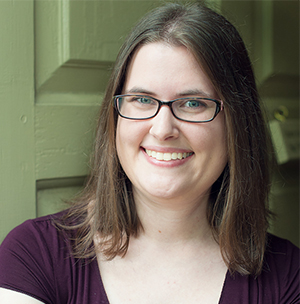Where do you currently live?
Charlottesville, VA
What is your current occupation?
Development Associate, James Madison’s Montpelier
What school did you attend while participating in NHD?
Home school student from Walnut Shade, Missouri.
What college did you attend?
Patrick Henry College: BA, History
College of William and Mary: MA, History
Who were your teachers?
Patty Roberts
What years and in what category did you participate in NHD?
2006-2009, Senior Paper
What are a few of your favorite or defining moments from your NHD experience?
I’ll never forget the judge at a regional contest who told me my paper had “too many footnotes.” I was indignant at the time, but after spending a year as an editor, I understand what he was trying to teach me: presentation matters. No matter how great your ideas are, nitty-gritty things like grammar, formatting, and footnote placement will affect whether people listen.
How did NHD help you after high school?
“In August 2011, I was hunting desperately for a topic for my senior thesis in history. In a random Google search, I spotted the name of Robert W. Tabscott, a minister and educator who I had interviewed as part of a National History Day project on abolitionist newspaper editor Elijah Lovejoy five years earlier. Intrigued, I followed the link to an article about John Berry Meachum, a free black pastor, educator, and businessman in antebellum St. Louis. I learned that Meachum, like Lovejoy, had taken a stand for African Americans’ rights and liberties. According to legend, when Missouri outlawed schools for blacks, Meachum opened one on a steamboat in the Mississippi River. I had found my thesis topic.
By the time I turned in my thesis, I had learned that not all stories about Meachum were true, but that he was every bit as heroic as Lovejoy—and every bit as flawed. Lovejoy campaigned for freedom for African Americans, but he also printed vitriolic anti-Catholic articles. Meachum bought slaves and allowed them to work for him to earn their freedom, but some of his slaves sued him for illegally holding them in bondage. As I continued to study Lovejoy and Meachum in graduate school, it became clear to me that these men were not simply heroes or villains. They were a little bit of both.
These complexities of human nature came into even sharper focus for me in 2016, when I worked as an editorial and research assistant for the Papers of Thomas Jefferson. As I worked on the “Retirement Series” of letters Jefferson wrote in his final years, I discovered the thoughts of a man who declared that all men are created equal but also counted hundreds of human beings as his property.
As I transcribed letters, conduct research, and check transcriptions and editorial notes for accuracy, I witnessed an increasingly feeble Jefferson worrying about whether his family would be provided for after his death. But even as I began to sympathize, I read letters in which enslaved people were talked about in ways that forced me to stop and take a deep breath to calm my rising anger.
Are people like Jefferson heroes or villains? Like Meachum and Lovejoy—like all of us—they are a little bit of both. People are complicated, and deserve to be treated with empathy and fairness instead of being pigeonholed into categories like “hero” or “villain.” A decade ago, NHD helped me take the first steps toward understanding that truth.”
What recognition did you receive for participating in NHD?
Missouri state finalist (2005-2008), Strickland Prize for African American History (2006, 2008), Shoemaker Prize for Missouri History (2006), published in Missouri Historical Review (2006)
Did you do anything with your NHD project or research after the contest year?
I never presented those particular papers outside of NHD. However, my 2006 project on Elijah Lovejoy has continued to inform my research interests to this day; my interest in St. Louis and antebellum African American history can be traced directly back to that project, and Lovejoy made cameos in both my undergraduate and master’s theses.
What has kept you busy since your days as an NHD student? Any particular challenges, stories, or achievements?
It’s been a bit of a winding road. I somehow found myself transplanted from Missouri to Virginia, where I’ve continued to study history and also dipped my toe into the nonprofit world. I earned my M.A. in 2016 (focusing on antebellum African American history), spent a year as an editorial apprentice at the William and Mary Quarterly, and landed a once-in-a-lifetime opportunity to spend a few months working on the Papers of Thomas Jefferson: Retirement Series, which is publishing all of Jefferson’s letters and other papers from his final years. I’m now a Development Associate at James Madison’s home, Montpelier. My work helps ensure that this historical treasure is preserved for future generations and that the stories of all Montpelier’s residents – from Madison himself to the enslaved butler who was at his side when he died – continue to be told.

